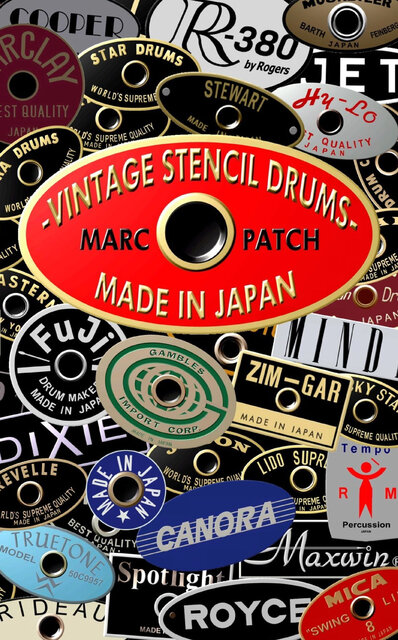The word “rare” is a very subjective term and quite overused in the drum world, but in this case I think it’s appropriate. There are many parts of this drum which are rarely seen, or not seen at all, and they don’t appear in any known catalogs.
Read moreDrum History Podcast - Episode 3 - Made in Japan: The History of Stencil Drums with Marc Patch
"Stencil drums" were Japanese copies of major drum manufacturers like Slingerland and Rogers that were created in the 50's to the 80's. They feature some of the most unique finishes that you can find and have become a unique category of affordable collectors drums. They have a somewhat mysterious history, but fortunately Marc Patch has written a book documenting the history of MIJ (Made In Japan) drums and took the time to talk with me.
Read moreRarely seen in the wild - My 1960s MIJ Lido Supremes in Fantasia Pearl
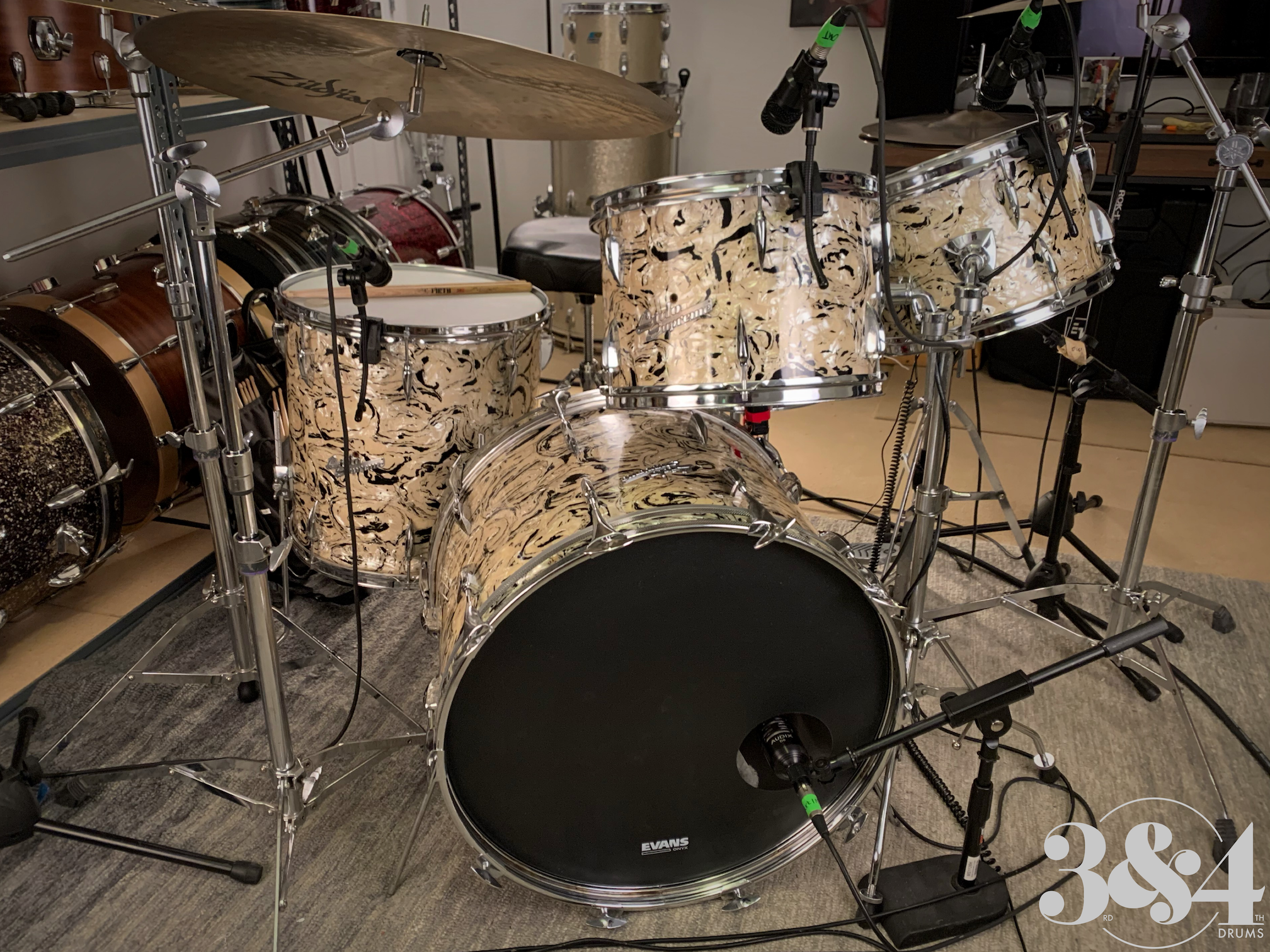
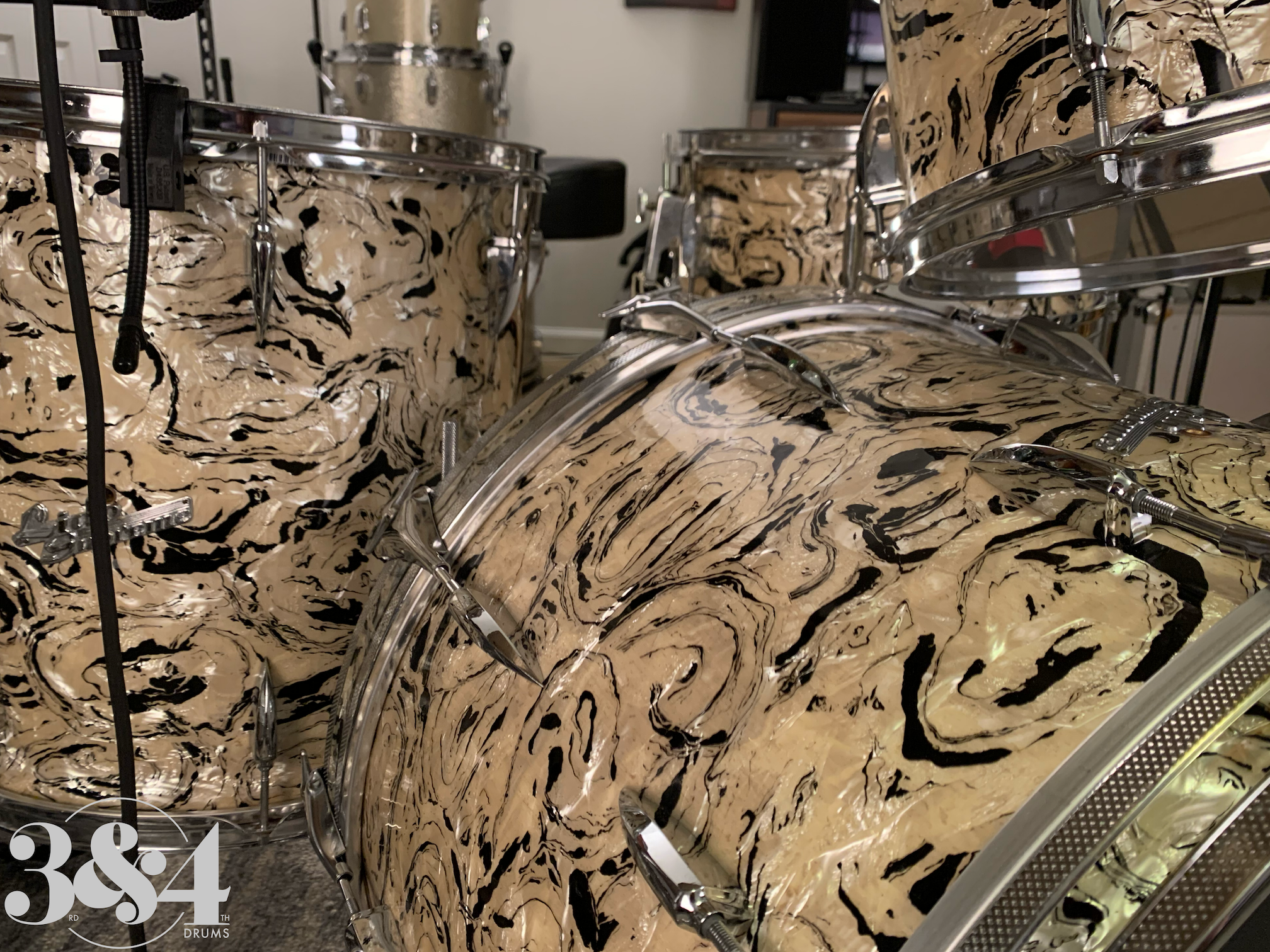
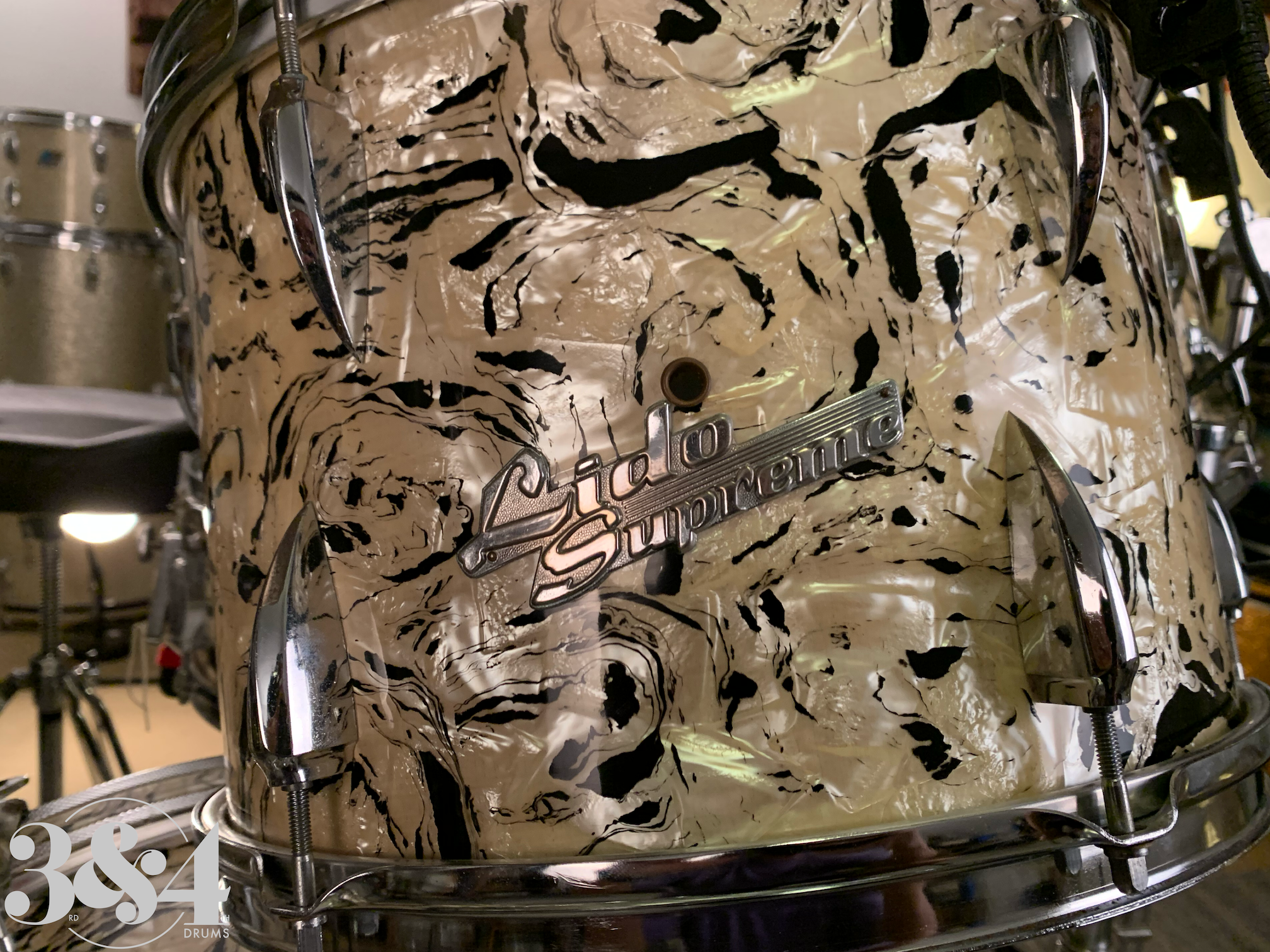
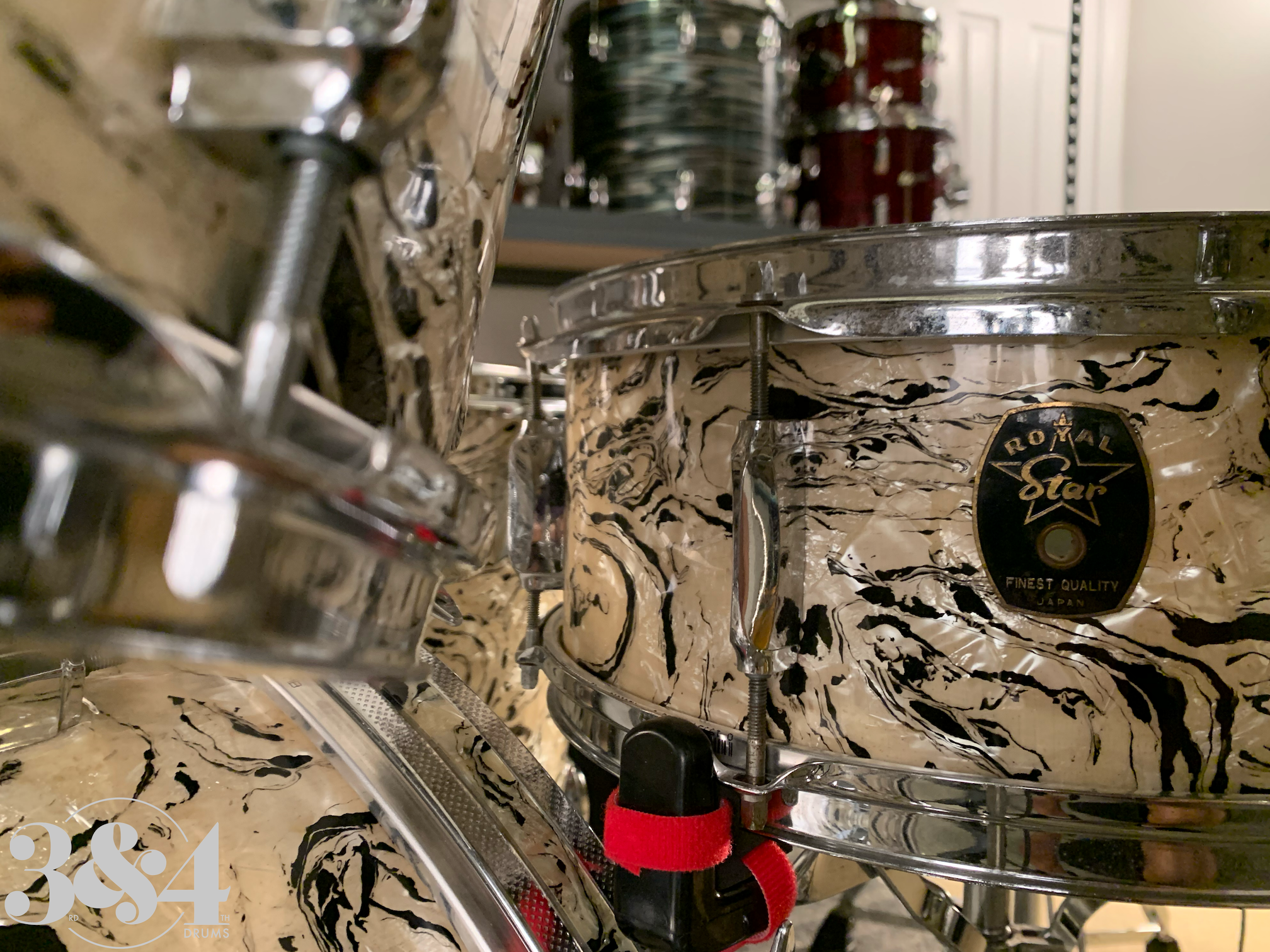
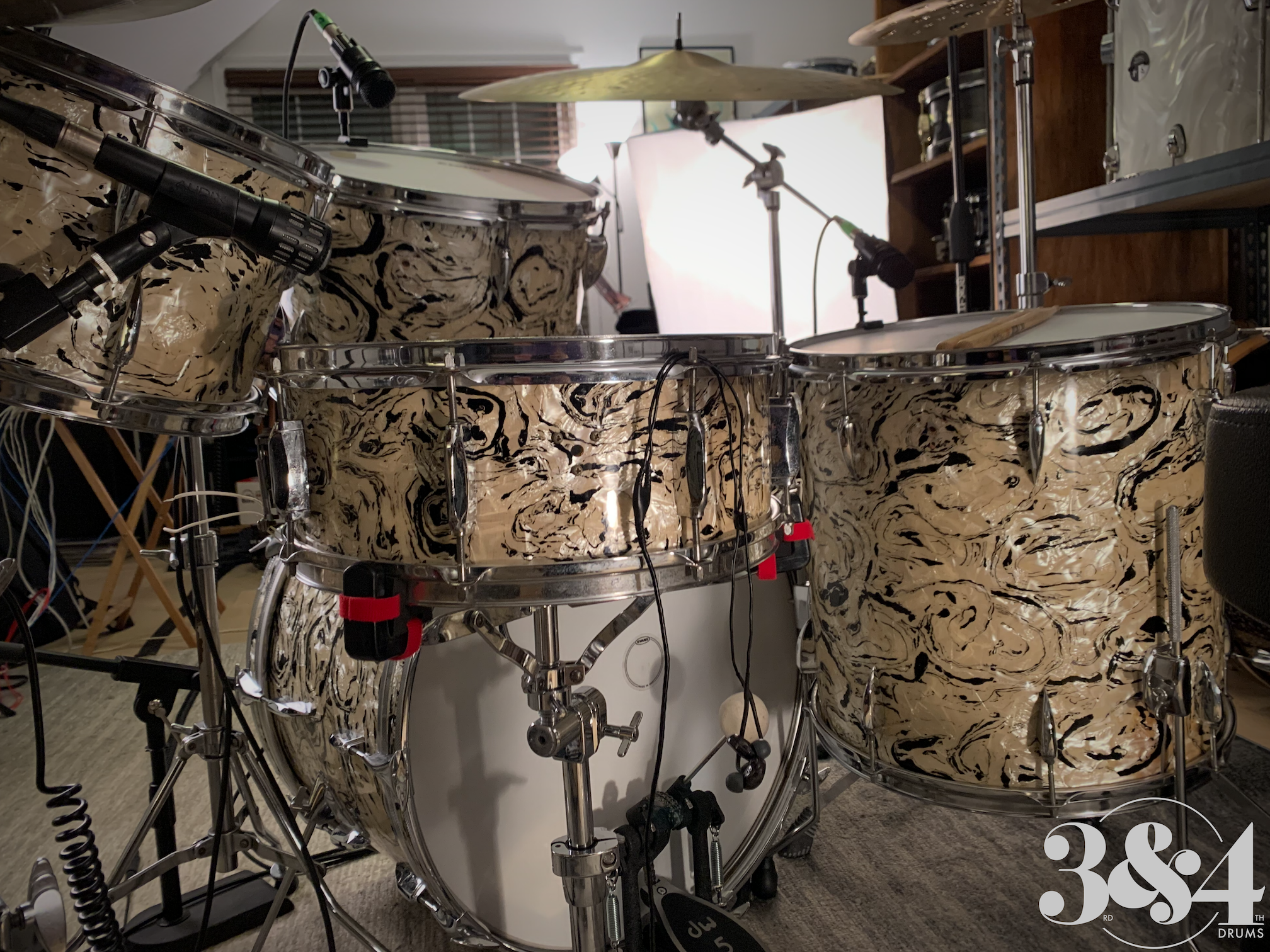
There are a few drum wraps that make my head turn.: Peacock pearl. Capri Pearl. Bowling ball blue oyster. Tiger eye / Root beer swirl. But when my eyes laid on one of the rarest wraps, Fantasia pearl, I knew I had to get my hands on it.
Read more1960s Zim Gar Stencil Drum Set
I want to feature a 1960s Zim Gar stencil set from my collection this month. Most of you know these sets were made in Japan. Sometimes you will see them listed as MIJ drums. They were made at the Pearl and Star (Tama) factories and imported in to the United States as a cheaper alternative to the great American drums.
Read moreGigging Vintage Drums - Made in Japan
From Wade Francis...
When they hear the words "Made in Japan" most people in the vintage drum world will probably turn their noses up or at least have negative thoughts. For the majority of those people, I cannot blame them. Having been addicted to vintage drum forums for a while now, I've seen first hand the bad name these drums have gotten. I was almost sucked in by the stigma but one road trip and a 1960s Star kit later, I must now defend these kits.
Shortly before purchasing my first vintage kit, I began trawling forums hoping to gain some information on what I was going to get and I have to admit that I almost backed out of buying the kit because of what I found. I was given the impression that "MIJs" were of poor quality and were often referred to as fire wood. Apparently they were notoriously hard to tune and were not durable in the least but after looking at the photo of this particular kit over and over again, it was the nostalgic appearance that won me over. The orange sparkle wrap was very similar to my brothers John Grey Autocrat kit that I learned on when I was around six years old. So I rounded up my cousin and we drove seven hundred twenty five kilometers from Adelaide to Melbourne (Australia) and back which ended up being an eighteen hour round trip so I was really hoping it would be worth it. I wasn't disappointed in the least.
The setup consisted of 20",16", 12" and a 14" snare. I could not believe how big and powerful this kit sounded for its size. The shells were three ply with re-rings and being only a teenager at the time, I was convinced big sounds came from thick maple shells only. How naive of me. I must admit however that the snare was fairly average sounding which I attribute to only having 6 lugs but when tuned quite high, it could still hold its own. Even with the beat up old skins that came with it, this little old kit really sung. I have never bothered replacing the heads on it and I wont until that sound fades. That little 12" tom is still my favorite sounding of all the kits I have ever played and I've played a lot of brands now. So you get the picture - it looked great and sounded great. Next, I decided to make it my gigging kit. After what I had heard about MIJ hardware breaking down after one gig, I was a little nervous - but there had been no bad luck so far so why stop? I gigged almost every week for two years on that kit, not to mention many hours of practice. I only had one hardware issue which was with one tom on a Drum Mate kit.
After acquiring and getting addicted to restoring a few more vintage kits (they are another story), I thought it would be a good time to stop gigging with that first kit and put some work into it . I started using a 1960s Pearl in black diamond pearl wrap for gigs. It sounds great and not a single hardware issue with it.
My point is that these drums are good quality and can hold their own against Ludwig, Slingerland, etc. I am not for a second suggesting they are as good or better than these drums, as my personal favorites are Ludwig, but they definitely are more than capable of a good sound and certainly are not "fire wood". It comes down to knowing how to tune them and, obviously, how you care for your drums. Don't try to tune these the same as you would a maple drum because it's just not going to work. Understand your drum and what its strengths are. With a good polish, these drums look a million bucks and they are considerably cheaper than their American counterparts. There is actually a very good video on youtube that compares an MIJ and a Ludwig set in the same room. If you are skeptical of what I have written, you will be very surprised by the results. http://www.youtube.com/watch?

